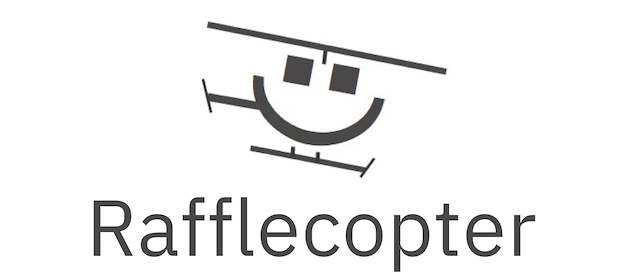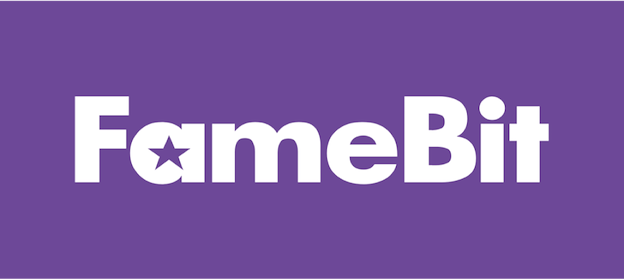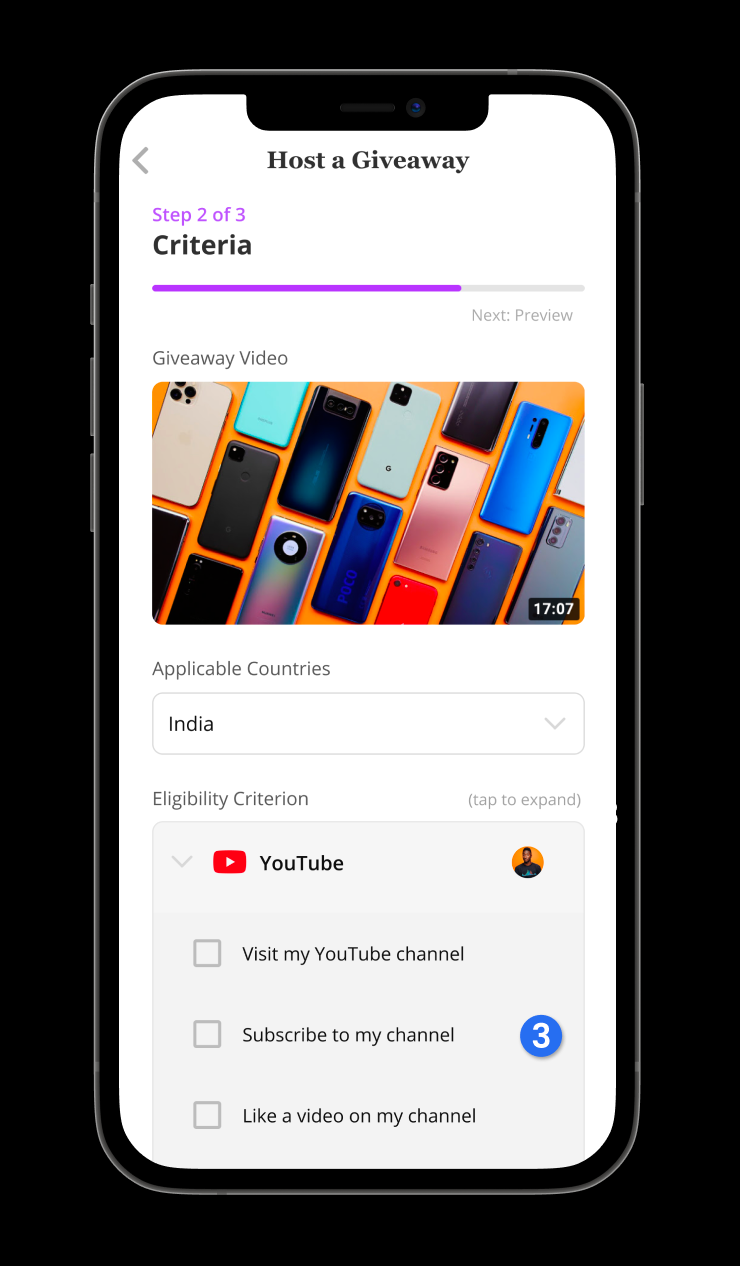— TEAMMATES
Akshay Mankodia
Vikas Rajbahar
Rishabh Goyal
Maruf Hassan
Akash Rode
— MY ROLES
UX Researcher
UX Designer
Product Manager
— TOOLS USED
Design:
Balsamiq, Sketch, Figma, Photoshop, InVision, Adobe Illustrator
Project Management:
Jira Software, Confluence, Google Docs, Google Sheets
Tech Stack:
Firebase, Dart, JavaScript, BLoC,
Deeplink
THE CHALLENGE
Social media competitions and giveaways are primarily conducted on web-based platforms in India and are limited to affluent societal classes. Eligibility criteria for these giveaways primarily entail ones that require users to have laptops. This leaves a wide range of people out of the equation, especially those in remote towns and villages across the country.
THE SOLUTION
The idea was to create a mobile app that gives an equal opportunity to a much wider range of socio-economic classes across the country, thus, allowing everyone to be a part of the exciting world of social media competitions through inclusive competition criterion.
APPROACH
Research
Competitor Analysis & Market Research, Detailed Online Survey
Discovery & Research Aggregation
Personas, Scenario Mapping, User Journeys, Information & Content Architecture
Design
Sketches, Wireframes, Visual Designs
Evaluation
Cognitive Walkthroughs
Reflection
Key Takeaways
MY CONTRIBUTION
I undertook different roles throughout different phases of the project. When my teammates and I initially conceptualised QuestHopp and the project was in its nascent stages I chalked out key deliverables for the team to achieve success. This ensured a streamlined workflow for all team members.
During the research phase I wore the hat of a UX researcher and conducted a comprehensive competitive audit along with a detailed online survey to understand the lay of the land. I also worked with team members to synthesise our findings into relevant UX artefacts, pinpointing current user pain points and joy points along the way.
Additionally, I ideated and brainstormed on several paper prototypes with the team before mocking up wireframes and medium fidelity prototypes.
Once development kicked off, my teammate Akshay and I prioritised the product backlog using the BUC framework. We did this every two weeks so developers were kept enabled throughout the sprint. I also started writing out user stories and acceptance criteria so developers could refer to them and build out a more robust application.
With QuestHopp now in Beta release I am currently testing the application for bugs and continue to log bugs in JIRA to improve the workings of our application. I also make it a point to reach out to social media influencers in tier B and C cities to install the beta version of our application and test it out.
Final Design Outcome
drag the slider below!
RESEARCH
Competitor Analysis & Market Research
To orient ourselves better around the social media giveaway market we conducted a deep competitive analysis and broad market research. This helped us understand the existing problems and limitations within the existing ecosystem. The market research helped us synthesise and distill key pain/ joy points centered around this ecosystem whilst the competitor analysis gave the team an insight as to how we could differentiate ourselves from the competition, fine-tune our USP and account for numerous inclusive criterion in our application.




Snapshot of competitor feature audit document
Detailed Online Survey
To better understand users feelings, motivations, pains, gains and extract more details centered around social media competitions and events, we deployed online surveys.

Snapshot of a section of the online survey
We gathered the following insights from the online survey & market research
that we conducted:
1) Majority of users who take part in social media competitions fall in the 15-29 age group.
2) Users with laptops have a higher success rate of completing criterion.
3) Hosts are unable to conduct giveaways on their mobile phones- the painful manual process being a major deterrent.
4) Users need a one-stop app where they can easily view all competitions and at the click of a button, enrol in them.
5) Major pain point for hosts: inability to automate giveaway criterion checking.
6) Existing applications are either not free to use or very buggy.
7) Users feel that there is a lack of transparency with respect to winners and that most of the times the competitions are rigged.
DISCOVERY & RESEARCH AGGREGATION
Personas
We created the following personas to help create memorable, realistic characters that represent a set of stakeholders. Most of the information from the research was pooled together and synthesised to create these personas.




Scenario Mapping
We diligently broke down the individual tasks users need to go through to achieve their goal and augmented it with our additional information. This increased our mindfulness and connected us to the texture of the domain. I also petitioned strongly to use this artefact because it would eventually lead the team to create an interface that reflects workflows that users are comfortable with.

TIP: Zoom in to get a crispier look!


User Journeys
Since the process involving a social media competition involves many steps, we made use of Journey maps to get a uniform view of the customer journey. We also employed this artefact to capture and understand the things that users say, think, do and feel at critical touch points throughout the experience.



Information & Content Architecture
To get a high level glance of users cognition efforts we mocked up an information architecture diagram followed by a content architecture diagram. The content architecture allowed us to understand the feature set on each screen. This allowed the development and design team to utilise content effectively.

Content Architecture - humble google sheets to the rescue

the opportunity area
PEOPLE + NEED +INSIGHT
people: who take part in social media competitions across the country
need: to be able to complete all the criterion
insight: without any hindrances
DESIGN
Initial Ideation/ Sketches/ Low Fidelity
Low fidelity mockups helped us think what our design should achieve. The lower fidelity really allowed us to play around quickly with different iterations, thus encouraging creative divergent thinking.
While tinkering around in this low fidelity phase, we made use of all the personas, journey maps and scenario maps that we mocked up. It served as a focal point, grounding the design decision every time we strayed.

Wireframes/ Medium Fidelity
Wireframes instantiated the rough ideas from our paper prototypes into a concrete user interface design, although still not at the level of a high level prototype.




















Visual Designs
*drumroll please*
A culmination of intricate planning and finely woven ideation!
QuestHopp.
Facilitating social media inclusivity- one competition at a time.










Participant Flow - ensuring transparency
1) Real time giveaway status is shown to participants.
2) Countdown provides an accurate reading of the time left before the competition begins.
3) Explicit giveaway descriptions are mandatory by the host so participants know that they are genuine.
4) Participants can only enter giveaways and complete criteria once they are live. This weeds out the problem of having to hash through participants who did not complete criterion during later stages.
5) Participants may view all the winners and a list of other participants. This transparency ensures that the competitions are not rigged.
Host Criterion – Pending
1) We embedded pre defined criteria into the application so that criteria are no longer vague and ambiguous. Rather, they are ones participants can easily complete and don’t have to go out of their way to complete.

Host Criterion – Fulfilled
1) A majority of giveaway hosting applications allow participants to enrol despite failing to complete all the criterion. We nipped this problem in the bud by actively checking completion statuses and only allowing participants to participate once they fulfilled all the criteria.

Host Flow
1) Hosts can easily share their giveaway to multiple audiences at the single click of a button.
2) Real time metrics allow hosts to gauge how successful their live competition is.
3) While setting up a giveaway, hosts have to select from pre-defined social media criteria. These criterion will not only encompass a wider audience owing to their inclusive nature but also greatly boost their social media reach.
4) Key post giveaway metric provides a snapshot of the performance of the giveaway.
5) Randomised, checked and tamperproof winner listing means competition winners are drawn at random after thoroughly checking their fulfilment criterion.
EVALUATION
Cognitive Walkthroughs
To evaluate the usability of our product we asked our close friends to complete a set of predetermined tasks on one of the our testing builds. The main point of conducting this walkthrough was to assess the intuitiveness and ease of the user flow.
We broke down core tasks in the application to processes that the testers were made to follow. During each step of the process we noted their answers to the following questions:-
1. Is this what you expected to happen/ see?
2. Do you think you are progressing towards fulfilling the task at hand?
3. What is your next action going to be?
4. What do you think you are going to see next?
The feedback from these sessions included:-
1) No clear indication of accounts connected.
2) Can't find the criterion once the competition/ giveaway has ended.
3) No progress bar makes it hard to assess completion.
4) No notification about giveaway/ competitions going live/ ending.
The team and I did not undertake these walkthroughs as we already knew about the domain and the product, and as a result could have acquired blinders through building and designing the UI.
REFLECTION
Key Takeaway(s)
Building a product from scratch is hard, but, finding the right people to build it with, who stick by your side, through thick and thin is even harder.
Making a product successful and 'getting it out there' and getting users to adopt the product is also equally challenging. As my team and I continue to reach out to influencers and users across tier A, B and C cities in India, we often take the time out to appreciate one another for the time and effort we have put into this. Our journey is far from complete, and even if this isn't the best product out there, our learnings from this endeavour are indispensable and priceless.
Finally, I can say this on behalf of the entire team, and with great confidence:
we didn't fall in love with the problem, we didn't fall in love with the solution, but, we fell in love with the process.
BONUS
SECTION
Since QuestHopp is a product we actively developed and released we made use of Jira and Confluence for project/ product management. Here are a few snapshots of our sprint board and our confluence documentation that houses our product specs. Over the months as we continue to improve the product and scale up we continue to stick by our agile approach.






